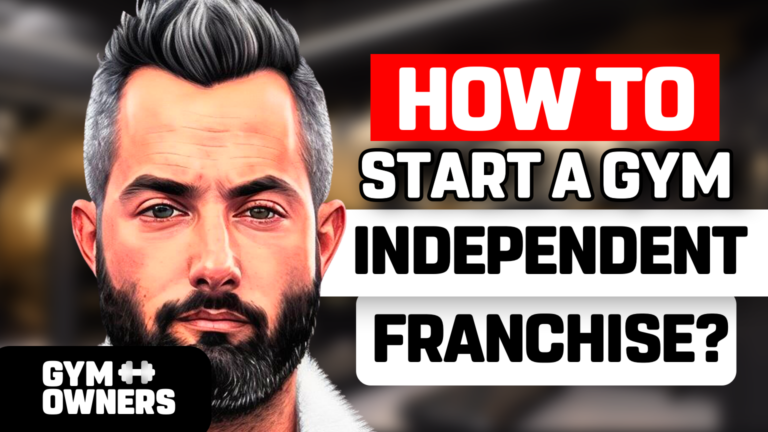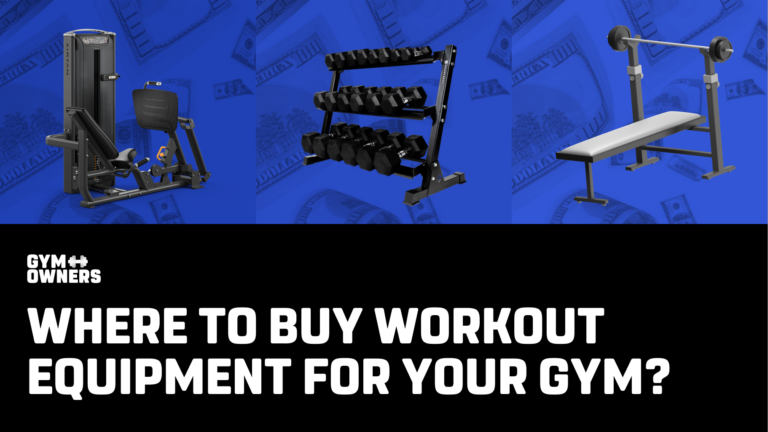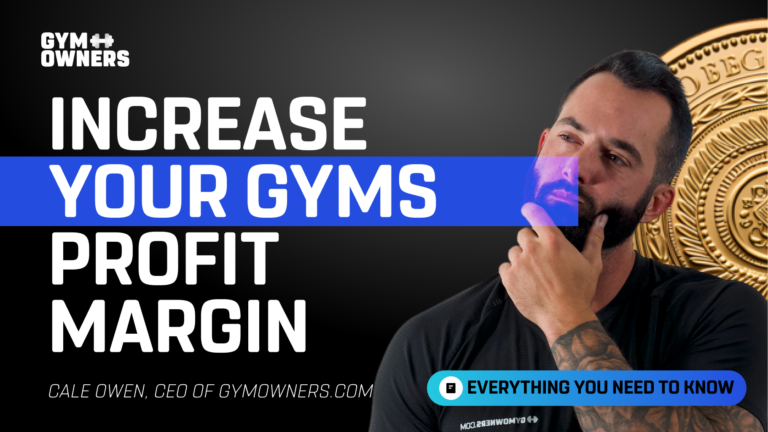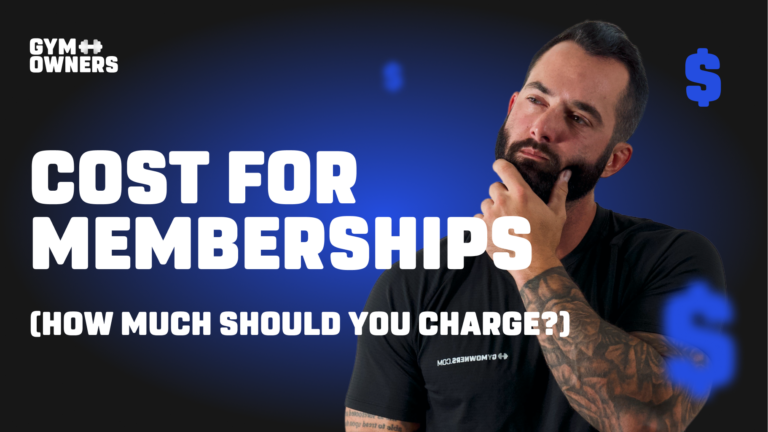Reading Time: 10 minutes
How to start a Gym: Franchise Vs Independent
If you’re thinking about starting a gym, but have no idea where to start, let’s take a look at what options are on the market. Your options are the franchise model, or an independent facility.
The big question is which will become more profitable, faster? At the end, I will let you in on the model I would start after owning multiple gyms, and helping over 5,000 gyms rapidly grow their business.
Gyms often seem like a great business for fitness enthusiasts, investors, and trainers alike, but are they? Is it better to open your own gym or franchise?
Let’s break down the advantages and disadvantages of owning a gym.
THE FRANCHISE GYM
Option one, a franchise gym, is the most popular and well recognized type of gym you could start.
But why is it so popular? Is it profitable to own a gym franchise?
There are 3 big reasons they’re more attractive to start vs an independent gym: brand recognition, pre-built business model, and the perception of success.
Let’s break down each one of the advantages.
BRAND RECOGNITION
If you live in the US or have watched the ball drop in Times Square during New Years, you’ve probably heard of Planet Fitness.
Want to know why you’ve heard of them?
Because they spend roughly a quarter of a billion (yes, BILLION) dollars every year on local and national awareness campaigns to advertise their judgment-free gyms.
They’ve even sponsored the New Year’s Eve ball drop in Times Square for 8 consecutive years.
So as a franchisee, you would reap the benefits of the brand power PF has created and invested in over the last 20+ years.
When you add in franchises like Golds Gym, Lifetime, Equinox, F45, Orange Theory and more, it’s easy to see why brand recognition is a big reason why you might want to go the franchise route.
But is it worth it? We’ll get to that a little later.
PRE-BUILT BUSINESS MODEL
Another reason why franchises are appealing is the pre-built business model they come with.
Think of it like a business in a box. You pay for the business and in turn, they hand you all the things you need to make that business work.
So instead of needing to create SOPs, employee handbooks, brand colors, logos, contracts, come up with pricing or sales strategies, you get all of that handed to you with training upon investing in the franchise.
It can take a lot of the guesswork out of running a business – especially if you don’t have experience doing it.
THE PERCEPTION OF SUCCESS
Reason #3 franchises are popular is because of the perception that they are successful.
You see the big name franchises, you hear about the thousands of locations, and all the revenue the franchise is making, so you associate it with success.
So that means if I start a franchise it must be successful…right? Ehhh not so fast.
WHAT ARE THE DISADVANTAGES OF OWNING A FRANCHISE?
Did you know that according to Franchise Direct, across ALL franchises, 51% of franchise owners make less than $50,000/year?
Only 7% take home more than $250k.
Knowing what I know now, I’d be hard pressed to invest in a franchise to only make $50,000 a year.
But that’s not the only reason you may not want to invest in a franchise.
Here are the top 3 reasons why a franchise may not work for you…
FRANCHISES ARE EXPENSIVE
Franchises can be very expensive to start and maintain, but does it cost more to open a franchise or an independent business?
Starting a franchise location can range from as little as $2,000 (Jazzercise) to as astronomical as $4.9 million (Planet Fitness).
But if we’re looking at averages, it costs roughly $280,000 (including franchise fees, build out, equipment, software, and more) to start a franchise gym.
That’s a decent amount of cash to get started and most people don’t have that collecting dust in their pockets, so the majority of people get loans.
But the expenses don’t stop there. Once you’re up and running the vast majority of franchises have ongoing royalties and marketing fees.
The average monthly royalty across fitness franchises is 6.4% right off the top and a 1.8% marketing fee. That’s 8.2% you can say goodbye to every month, no matter what.
Then you have renovations that are required by the franchise every few years. You have zero choice in this and basically have to pay for the updates and changes as needed. Those updates can range from $10,000 to upwards of $1.2 million depending on the franchise.
So the question becomes, when can you expect to make a profit?
If you’re wondering what the payback period would look like (how long until my initial investment is paid off and I’m truly profitable) then read until the end because I will include a full comparison.
NO FREEDOM
If you like having a lot of autonomy and freedom to try new things or even add different types of training options for your members, you’re not going to find that in the franchise model.
A franchise is designed to scale with a consistent look, feel, and experience at each location.
It’s understandable because they want to make sure that every member or visitor has a consistent experience that represents their brand well, no matter what location they visit.
They have a brand to maintain and protect, which means when you sign up with a franchise, you’re signing up for their business model, training methodology, pay scale, staff training, scheduling, marketing requirements, offers, and a whole lot more.
Now if it’s a successful franchise, that makes sense and it’s worth it – But what if it’s not? And is it worth the initial investment?
YOU STILL HAVE TO WORK
I might sound like captain obvious here but after talking with thousands of franchisees and hearing many of them say that they expected this to be a passive investment, it’s worth mentioning.
You’re buying a business.
A business is not a magical machine that just runs by itself. It will still require you to work full time, regardless of what they promise you during the sales pitch.
And if it doesn’t scale as planned, you will be the one shouldering most of the work to protect your margins.
The moral of the franchise story is don’t put your hopes, dreams, and life savings into a fitness franchise if you’re expecting it to be mailbox money because that’s not going to happen right away…if ever.
The real question is…how much money can you make from a fitness franchise? I’ll get to that in a second, but first let’s look at the other type of gym you could start.
THE INDEPENDENT GYM MODEL
The second type of gym you can start is broadly categorized as an independent gym.
Meaning, it’s your brand, your messaging, your business plan…it’s all yours.
There are tens of thousands of independent gym owners in the US alone ranging from group fitness facilities to 24/7 health clubs and it’s really easy to start one yourself.
Let’s start with the 3 reasons why you might want to start an independent gym:
1. LOW START UP COSTS
Compared to the average total investment needed to start a franchise (Reminder, it’s $280k), starting your own independent gym can be as little or as much as you want.
You really only need to figure out three things:
What type of training model do you want to run?
How much space do you need?
How much equipment do you need?
If you can answer the first question, you pretty much have your answer for the next two.
For example, if you’re starting a bootcamp, all you need is 1,500-3,000 sq ft, minimal equipment, flooring, painted walls, and a great sound system.
However, if you want to start a 24/7 health club style facility, you’re looking at closer to the $200k-$1M range depending on how big you want to go.
For context, I started my second gym (a strength and conditioning gym) with $30k and only used $17k of it to actually outfit the facility.
2. CREATIVE FREEDOM
The second reason people love starting independent gyms is for the creative freedom that comes with it.
You’re an entrepreneur.
You choose the name of your gym, the location, the logo, the colors, the branding, the messaging, offers, training protocols, pricing…everything.
It’s all up to you, and you can do whatever you want.
This of course comes with its own costs because if you don’t have experience running a profitable business and understand the basics of marketing, sales, and fulfillment – owning your own independent gym can be a nightmare.
3. HIGHER PROFIT MARGINS
The third reason an independent gym is appealing compared to a franchise is your potential for higher profit.
You’re not paying royalties every month, you’re not locked into renovations every 3-5 years, you don’t have minimums on marketing spend, and you have complete control over what you pay your staff and what you charge your clients. Couple this with the lower startup costs and you have the ability to be debt free, stacking cash quickly (If you know what you’re doing).
THE CONS
If you don’t know what you’re doing when it comes to running an independent gym, it’s really easy to crash and burn. So what are the cons of starting your own independent gym? Depending on how you look at it, there can be a bunch but here are the three that stick out the most.
NO BRAND RECOGNITION
It can be really difficult to start something from scratch.
No one knows who you are, what you do, how you can help them, and if you’re legit.
There’s a lot to be said for having a brand that is recognizable.
So how do you overcome this? You use the same methods the big franchises use: You market–a lot.
You want to have an exceptional offer that gets people results and is something they ACTUALLY want.
If you’re not able to do this, you’re going to struggle to scale the way you want to.
NO BUSINESS MODEL
Another negative is that you don’t have a business in a box.
Do you enjoy creating SOPs?
Does the thought of writing scripts, creating employee handbooks, and working with lawyers on your contracts sound exciting?
Probably not, but if you go at it on your own, you better be ready to do it all.
Be prepared to spend a lot of time and money to figure out how it all works.
It’s not for the faint of heart, but that’s why gym owners rule.
NO SUPPORT
Owning a gym can be extremely lonely – especially if you don’t join a community of other gym owners.
If you’re not plugged into a support system and don’t have a place to go to get your questions answered, it can be a rough ride.
Good news is though – the choice is yours to do it alone or to find a group to grow with.
SO WHICH BUSINESS MODEL WOULD I START IF I WERE TO DO IT ALL AGAIN?
Let’s do a little comparison.
For this comparison, I’m going to use two different franchises and one independent gym.
The first franchise is F45, the second is Planet Fitness, and the third is what I would start– an independent large group and semi private gym.
We’re going to look at 4 things in this comparison:
Initial investment amount
Average yearly revenue
Average yearly profit
And most importantly the payback period.
LET’S LOOK AT F45 FIRST
This very popular large group training franchise was founded in 2011. Since then, they’ve exploded to over 1,750 locations in multiple countries (I won’t get into their training model. If you’re not familiar with them, just youtube F45 or visit their site and you’ll see it).
The following numbers are taken from a statement made by their CFO Charlie Payne:
The initial investment is approximately $315,000 (For transparency this includes having $60,000-$100,000 in additional funds to live off of for a 6 month period according to their FDD).
Royalties are 7% of gross sales, or minimum of $2500/month that kicks in 180 days from signing the deal (not 180 days after launching).
You also have what’s called a Brand Fund which is 2% of gross sales or $200 a month.
And you have to spend a minimum of $2500 per month on marketing
(Now, I don’t have a problem with the marketing budget..if it actually works. If it doesn’t, you’re stuck just throwing money away – and if you don’t have control over the offers and they just stop working, you’re in trouble).
According to their CFO, by year 3, their average location is doing roughly $360,000/yr in gross sales with (what he says) 30% EBITDA margins (which I HIGHLY doubt because you’re taking 9% off the top every month in royalties and brand fund which means their average location is doing almost 40% margins – which is suspect at best).
Another thing we need to look at is how many members do you need to hit 360k/yr?
Well, the average F45 membership is $155/mo which means you need to average 193 members/mo to hit $30k/mo in revenue.
So let’s assume you end year one with 100 members and 15% EBITDA margins.
Year 2 you have 150 members and 25% EBITDA margins
Year 3 you have 200 members and 30% margins
Year one you’re looking at $28,000 in profit
Year 2 is $70,000
Year 3+ is $111,600
With your initial investment of $315,000, it would take you roughly 4 years to break even on your investment…
But that’s if you put ALL of your profit into paying back your original investment and you hit those numbers.
SO HOW LONG UNTIL I RECOUP MY INITIAL INVESTMENT?
Real world estimates would put it closer to 5-6 years at best. Especially if you use their financing options which have interest rates around 9.5% and some interesting terms.
NEXT LET’S LOOK AT PLANET FITNESS
It’s the behemoth of the high value, low price industry.
Planet Fitness was founded in 1992 and from the start it focused on having an inclusive, non-intimidating culture.
They currently have over 100,000 locations around the world and are the top ranked fitness franchise in 2023 according to entrepreneur.com’s top 500 franchises.
The initial investment ranges from $1.6 million to $4.9 million – so for this example, I’m just going to split the difference and go with $3.25 million.
It’s important to understand that to even qualify you need to have a networth of at least $3 million and a minimum of $1.5 million in liquid assets.
The extra fees, re-equipment, and remodel costs are substantial.
The royalty is 7% of gross sales
Then you have re-equipment costs of $314,000 to $922,000 every 5-7 years
Remodels will cost you $70,000-$600,000 every 5 years
And you have a 2% national advertising fund fee
According to Planet Fitness’s 2022 FDD, the average annual revenue per location was $1.5 million with EBITDA margins that range from 9% to 36% (but that’s for their corporately owned locations, so it might be very different for franchise locations)
SO HOW LONG UNTIL I RECOUP MY INITIAL INVESTMENT?
If we just take the average investment, revenue and margins, it would take you 9.3 years to reach breakeven on your investment, and that doesn’t include the remodel or re-equipment costs.
I don’t know about you, but I’m not sure I’d want to wait almost a decade before it became truly profitable…
FINALLY, LET’S LOOK AT AN INDEPENDENTLY OWNED GYM
We will base the numbers on the average gym, and the model that I would open– a large group/semi-private facility.
I’m going to go crazy with the initial investment and say it’ll be $100,000 – keep in mind you can start this for 20%-40% of this with ease, and depending on the location.
With $100,000 initial investment, which includes $25,000 in a 90 day grand opening pre launch ad campaign, here’s how quickly you could pay that back.
In the first 90 days, you’d just be preselling 6 week challenges at $599 per person. So Day 1 when your gym opens, it’s just 6 week challenges.
Why?
Because you want CASH and you want it fast.
You also want to get people INSANE results quickly to establish yourself as the transformation leader in your community.
So we’re going to pour our marketing dollars into the first 90 days and start collecting money ASAP.
Using our averages – with a $25,000 ad spend, in 90 days you can add 205 members at $599 before you ever run a class.
That’s $122,795 in CASH Day 1.
SO HOW LONG UNTIL I RECOUP MY INITIAL INVESTMENT?
You’ve already recouped your initial investment in 90 days.
To take it a step further, I would just keep pouring all my extra cash for the first 60-90 days of being open into more marketing so I can set myself up with a huge recurring revenue model in a very short amount of time.
Based on our numbers, at worst 50% of those 205 people will convert into a monthly membership of $49/wk so you’re looking at having $21,000 in recurring revenue by your 7th week of being open – and then it just continues to stack.
LET’S RECAP
That was a lot, so let’s recap.
You have two gyms you could start: Franchise or Independent.
Each has their pros and cons. If you want to go the franchise route, the payback period is going to take time, but you also get a business in a box.
If you go the Independent route, you can reach profitability much faster, but you have to go it alone. Now knowing all of this, which would you choose?
BEFORE YOU GO…
Data is everything– make sure you are tracking the prospects that show and close so you know where you can improve your process. For an all in one Gym Management Software check out GymDash and Grow your gym with data today!
We’ll catch you on the next one. Thanks for reading. You rule.








